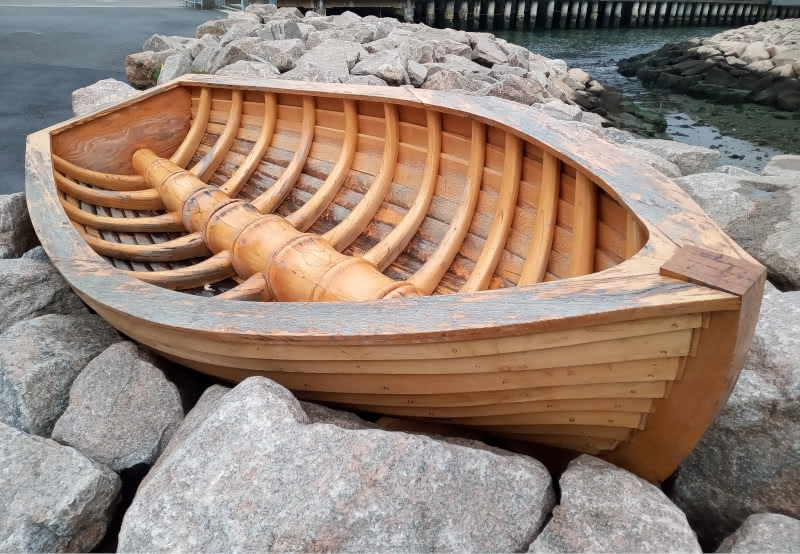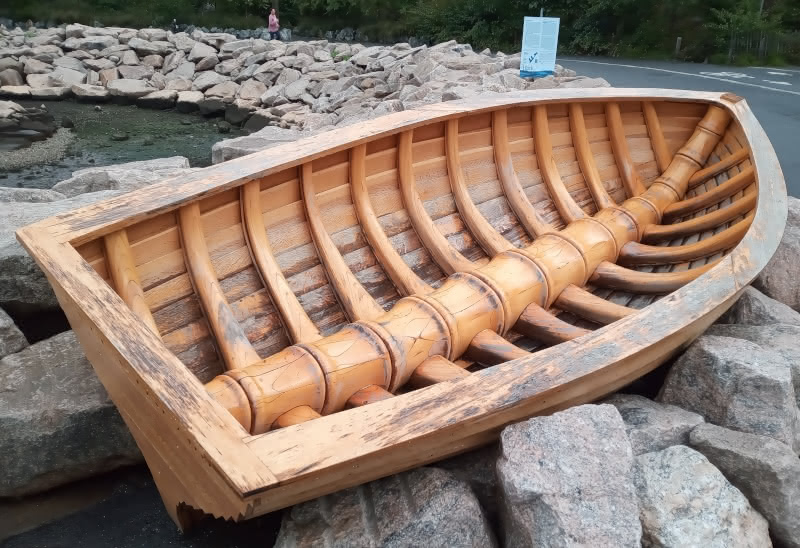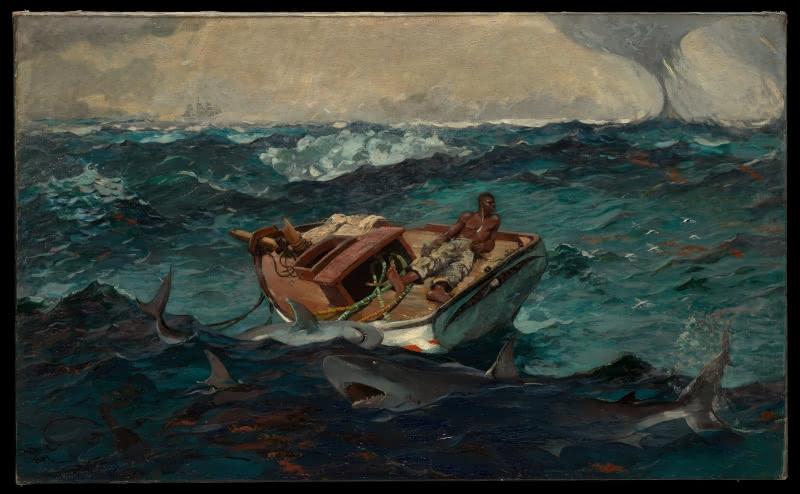Taking a look at Hugh Hayden’s Gulf Stream sculpture on display at Brooklyn Bridge Park.
Brooklyn Bridge Park is a large, very nice park which runs adjacent to Brooklyn Heights between DUMBO and the Columbia Street Waterfront District. I have published a number of articles featuring my photos at Brooklyn Bridge Park, including geese, doves, flowers, and public art. Today, I return to the public art theme with two photos of a boat sculpture, which I just learned was created by Mr. Hugh Haden and is called The Gulf Stream. I took both photos with the /e/ OS camera app on my Teracube 2e phone.


This nice boat has been at the park since May 2022. I walked by it numerous times thinking that I ought to take a picture of it and publish it at The New Leaf Journal. The skeletal ribs inside the boat are striking.
On the morning of October 5, 2022, I had already been taking pictures of other things near by. I had no idea how long this nice boat would be ashore (Kevin the hamster is no longer with us), so I decided to seize the moment. The boat shows the effects of being outdoors in the elements for several months, but it is holding up exceptionally well all things considered.
While I could tell that the nice boat was some sort of art piece, I could not figure out what it was. Most of the other pieces on display (with a couple of exceptions) have a distinct African aesthetic, so I figured that it was in line with that theme. However, had I looked around more closely, I would have noticed that there was a sign close to the boat about the exhibition. I only noticed the sign when I was cropping the second of two photos (see above). Thus, I undertook my research to learn more about the piece without the benefit of having read the sign about it.
Sure enough – the boat is part of Brooklyn Bridge Park’s ongoing Black Atlantic art exhibition. The piece is called Gulf Stream and was created by Mr. Hugh Hayden, an artist who was born in Dallas, Texas, and now lives and works in New York City (Mr. Hayden is also co-curator of the entire exhibition). Below, I quote an excerpt about the work from the exhibition page:
Hayden has combined a clinker-built boat hull exterior with a whale like skeletal interior to create this empty vessel washed ashore. The form and “Gulf Stream” title simultaneously reference and ‘remix’ an 1899 painting by Winslow Homer of a lone Black figure in dire circumstances on a wrecked boat at sea and Kerry James Marshall’s 2003 reinterpretation that has transformed the scene to one of leisure. Hayden sees his Gulf Stream sculpture as ‘both a boat and a body, whose unknown passengers may have made it to safety or been swallowed by the sea.’
I was not expecting to find such a detailed account. We learn not only about what inspired Mr. Hayden to create the piece, but also the intent and ideas behind it. That it uses the two artworks it is based on to leave ambiguous the fate of its passenger is interesting. The Metropolitan Museum of Art has a detailed page on the first work Mr. Hayden’s boat was inspired by, Winslow Homer’s The Gulf Stream.

Interestingly, while The Gulf Stream painting depicts a lone man in dire straits, stuck on a boat in the middle of the ocean, surrounded by sharks, and with nothing to eat but a few stalks of sugar cane, the Met notes that the work contains some faint signs of hope in the background (faintly visible in the far left):
[The man] is oblivious to the schooner on the left horizon, which Homer later added to the composition as a sign of hopeful rescue.
Homer had originally painted The Gulf Stream in 1899 and reworked it in 1906. You can learn about Mr. Kerry James Marshall’s 2003 Gulf Stream painting here.
The Gulf Stream sculpture, has done well to withstand the elements outdoors for several months – perhaps giving rise to the optimistic possibility broached by Mr. Hayden that its former passenger survived his seafaring journey.